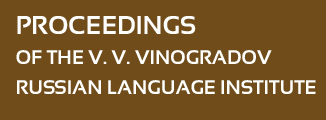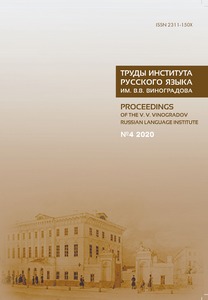ГДЕ ТЕРРИТОРИАЛЬНО (‘WHERE GEOGRAPHICALLY’) AND КОГДА ПО ВРЕМЕНИ (‘WHEN IN TERMS OF TIME’)? DISCOURSE FUNCTIONS OF PLEONASTIC CONSTRUCTIONS
Abstract:
The article analyzes the discourse functions of the conversational где территориально (‘where geographically’) and когда по времени (‘when in terms of time’). Based on data from the Russian National Corpus (RNC) and ruTenTen2017, we demonstrate that these expressions, despite their stylistic imperfection and semantic redundancy, play an important communicative role. Unlike pronominal constructions with the particle именно (‘exactly’), such as где именно (‘where exactly’) or когда именно (‘when exactly’), their function is not specifi cation, but concretization of a more general parameter. In questions, they allow speakers to clearly signal the expected type of information — a reference to place or time expressed in absolute terms, i. e., specifying a concrete location or exact time (e. g., ‘on Prechistenka Street’, ‘in Northern Finland’, ‘tomorrow at one o’clock’, ‘September 18 at 12:30’). In statements, such pleonastic constructions serve as a contrastive means of focusing the addressee’s attention on what is to follow in the utterance. Similar pleonasms are found in other languages, suggesting a more general discourse mechanism. Functionally, these constructions are part of a broader set of communicative tools used at the beginning of a clause to signal its upcoming content.


